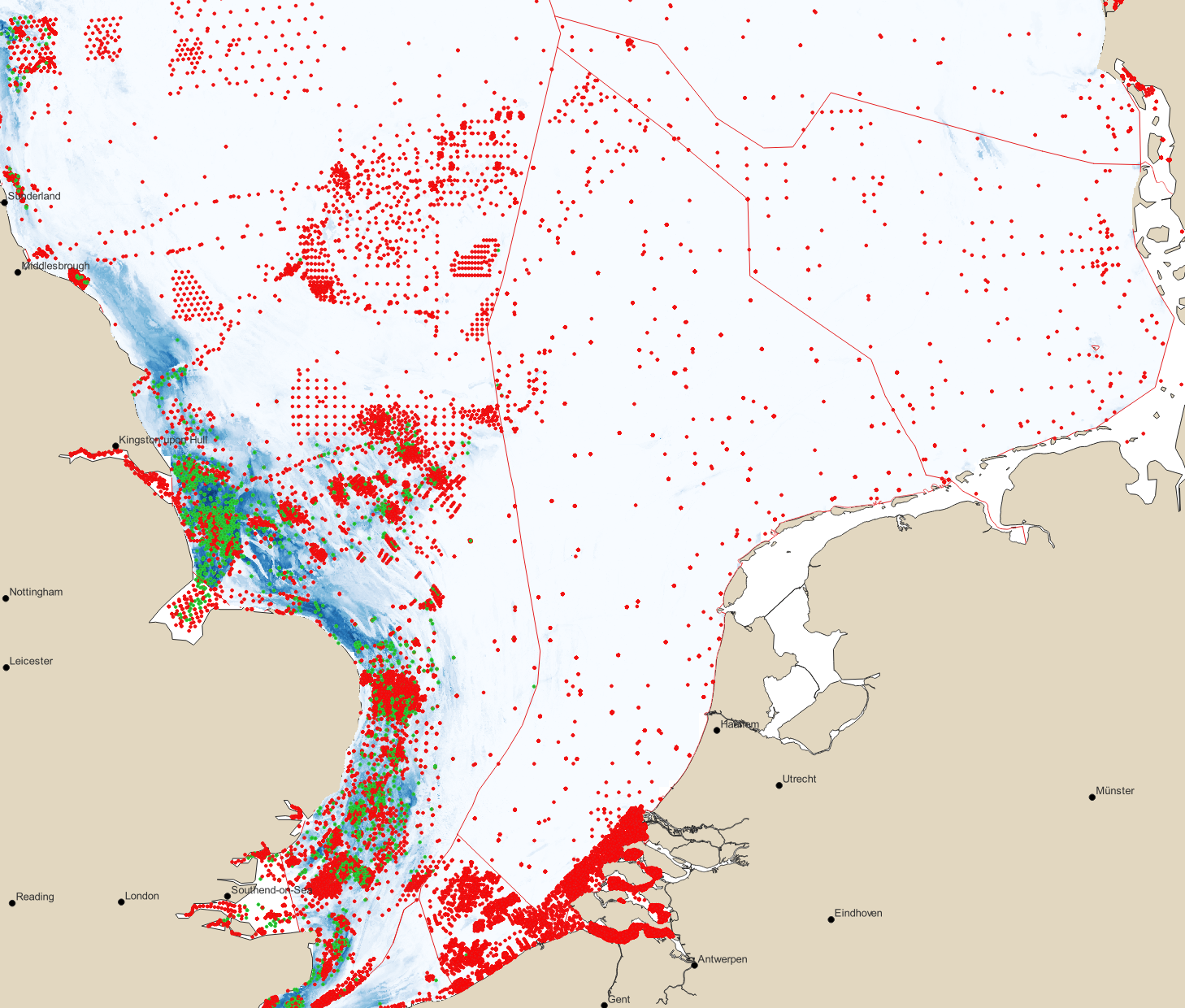The user organisation
A collaboration between Deltares and the Dutch Ministry of Infrastructure and Transport. Deltares is an independent not-for-profit research and consultancy organisation and EMODnet Biology partner.
Challenges faced by the user
The request by the Ministry was to chart the actual distribution of four reef-building species (Sabellaria, Modiolus, Lanice, Ostrea) in the Dutch EEZ, and to estimate the probability for restoring populations of these species in the same area. Species distribution models based on actual observations could be made for three out of the four species, and for this EMODnet data (plus some additional observations) were used. For the flat oyster, there is no current occurrence in the North Sea and the analysis was based on historic data.
EMODnet bathymetry data, and derived bathymetric position index variables, were used among the independent variables for predicting the occurrence of the species. Other independent variables were sediment composition (from German sources), salinity and temperature (from Copernicus) and physical stress to the sediment (from Deltares physical model).
EMODnet services used
We made use of the data product on presence/absence of macrobenthic species in the Greater North Sea. Using this data product was a huge advantage compared to simple use of presence-only data. It allowed estimating a random forest model in a straightforward way for all species. We were hugely supported in this effort by EMODnet. Producing the maps was far less work than the amount of work that has gone into the compilation of the diverse data sets at the origin of the EMODnet product.
Impact of EMODnet
Use of the EMODnet data has allowed our organisation to input original results we hold from hydrodynamic model and connect them to the most complete database of biological observations possible. As we do not generate biological data ourselves, we are dependent on the availability of data compilations like EMODnet Biology.
Media

Related documents
Herman, P.M.J and F. van Rees. Mapping Reef forming North Sea Species. Deltares report 11207716-000-ZKS-001. Deltares, Delft, the Netherlands. 35 pp.
Did you like this story?
Receive our monthly updates directly in your inbox:
